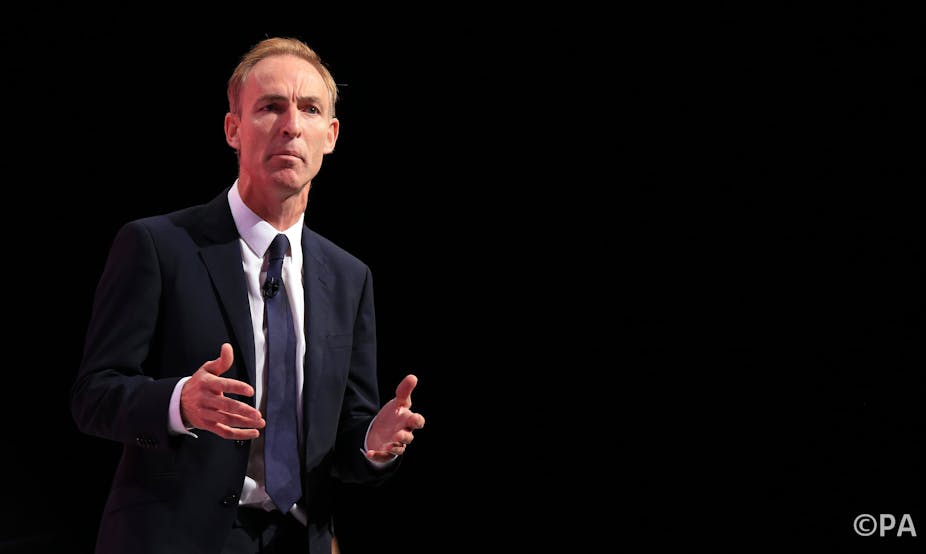Rumours have been swirling for about a month now that Scottish Labour leader Johann Lamont was facing an internal challenge. So in one sense, the news of her resignation is not a surprise. But despite the signs, her decision to step down with immediate effect was still a shock.

The bookies had initially decided on a favourite: deputy leader Anas Sarwar, who has taken Lamont’s place until a successor can be found. But the front-runner mantle switched to former Scottish secretary Jim Murphy after it became clear that the Blairite is likely to put himself forward. Gordon Brown received backing from party grandees over the weekend, but has ruled himself out.
Whoever wins, there are some key challenges ahead. This will determine whether the party can maintain its number of Scottish MPs in next year’s general election and have a chance of toppling the SNP in Holyrood in 2016.
“Boxed in”
First, they have to find a strategy that deals with Labour’s “boxed-in” unionism. The party currently finds itself as the most constitutionally conservative in Scotland. This was quite clear from its Devolution Commission report, which was unable to recommend devolving income tax in its entirety and played it fairly safe with regards to devolving welfare.
Labour is committed to the UK as a “sharing union” and places a lot of emphasis on the idea that citizens’ entitlements to things like benefits and pensions must be equal across the whole of the UK. This leaves very little room for devolving taxation and welfare, two of the policy areas that the majority of the Scottish electorate want to see controlled by the Scottish parliament.
Coupled with this is the position in which Labour’s Scottish MPs find themselves. On the one hand there is pressure within the party to not allow devolution to go too far for fear of rendering themselves obsolete. On the other there is the issue of English votes for English laws that the prime minister cunningly unleashed on the morning after the referendum. It is a constitutional pressure from a different source, but ultimately leads to very similar problems.
So Scottish Labour’s new leader will have to try to maintain the influence of the party in Westminster while seeking out the constitutional zeitgeist in Scotland – two goals that may well prove mutually exclusive. Does the new leader essentially try to do what Murdo Fraser proposed for the Scottish Conservatives and create an almost brand new, nearly independent party in Scotland? This may well be a step too far considering how much the party has to lose in Westminster.
SNP threat
Following from this is the very real possibility of the constitutional question benefiting the Scottish National Party (SNP) at the general election. The SNP hit its Westminster zenith back in October 1974 where it won 11 seats and 30% of the vote in Scotland. Since devolution, Scottish voters have voted less favourably towards the SNP in UK than in Scottish elections.
But the so-called “vow” by the three main UK parties before the referendum, which is currently being turned into an actual proposal by the Smith commission, has the potential to come back and haunt Labour. There is a chance the process and timetable set out simply won’t lead to cross-party agreement.
This is looking less likely now that the Conservatives and Labour appear to have agreed some sort of deal over income tax and welfare devolution, yet the constitutional question could still be a very salient electoral issue in May and benefit the SNP. A recent Panelbase poll showed that the SNP were ahead of Labour in voting intentions by enough points to cost Labour a number of seats.
Though the poll was commissioned by the SNP themselves, Scottish Labour’s new leader certainly has to address this issue urgently. A poor electoral performance in Scotland could scupper the party’s hopes of winning at UK level. Salvaging this will involve convincing Scottish voters that a Labour government in London is in their best interests. And considering that the areas which voted Yes in the independence referendum are traditional Labour heartlands, this may well prove to be a harder sell than in the past.
Public image inhibited
Then there is Labour’s perception problem. The key factor behind SNP winning the Scottish elections of 2007 and 2011 was not the constitution but assessments of how well they would perform as a party of government compared to their opponents. Put simply, the SNP were perceived to be better than Labour at “standing up for Scotland” and delivering public services, and were considered to have the superior frontbench team.
When it comes to fighting Scotland’s corner, the SNP continues to have the upper hand. The nationalists will particularly have a field day with the fact that Ed Miliband allegedly ordered Lamont to keep quiet about the bedroom tax for a year while he figured out a policy response. Lamont also suggested that Scottish Labour is a “branch office” of the UK party with no autonomy, giving the new leader some serious work to do to persuade Scottish voters otherwise. This will be particularly important in the 2016 Scottish elections. Whereas Labour’s vote tends to hold up well in Scotland in UK general elections, a defeat in the Scottish parliamentary poll in 2016 is in danger of becoming a foregone conclusion.

In sum, Scottish Labour’s new leader has a formidable challenge of rebuilding the party’s image in Scotland. The choice of party leader and the direction that they take will undoubtedly shape events. Whatever happens next, it certainly promises to be fascinating.

